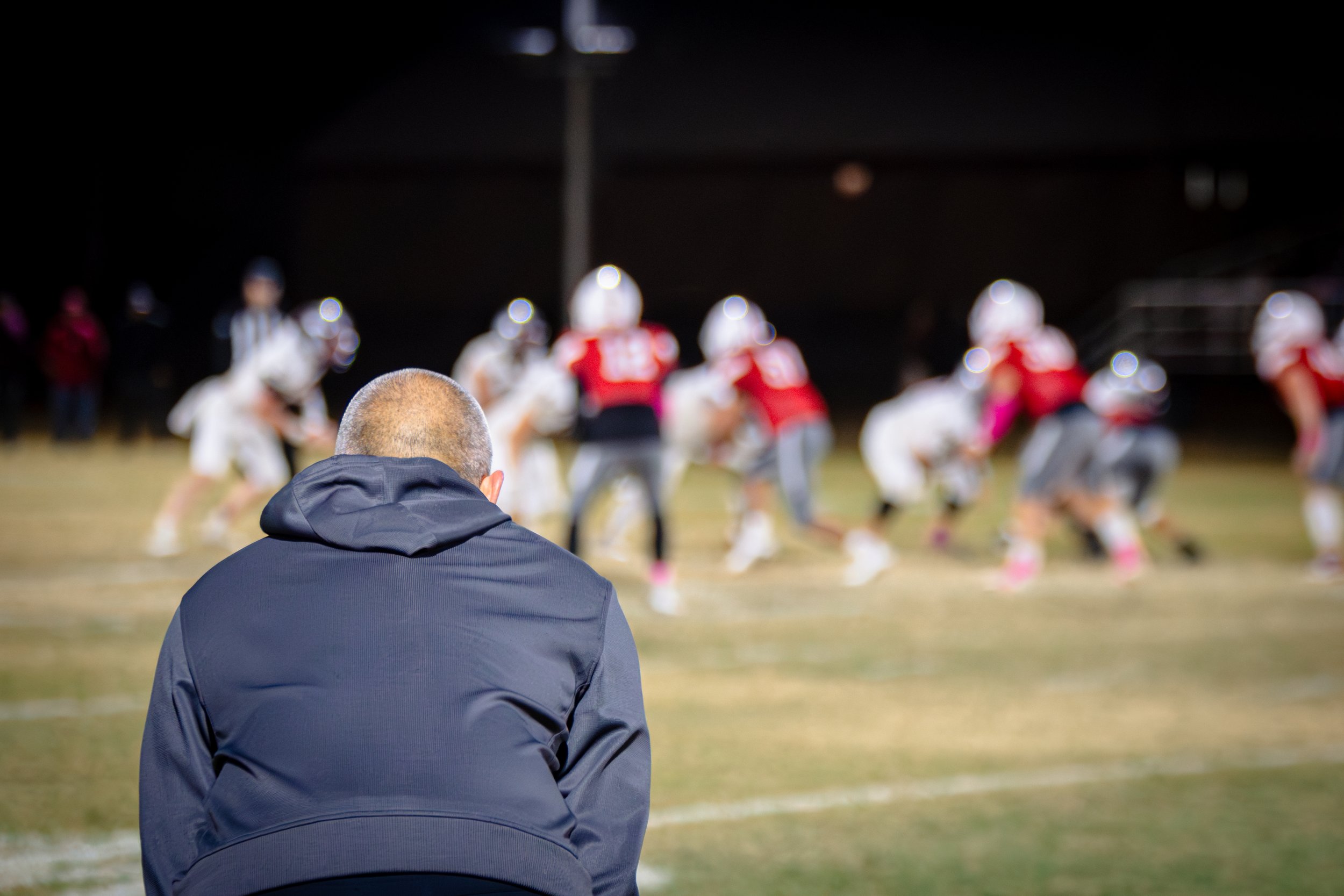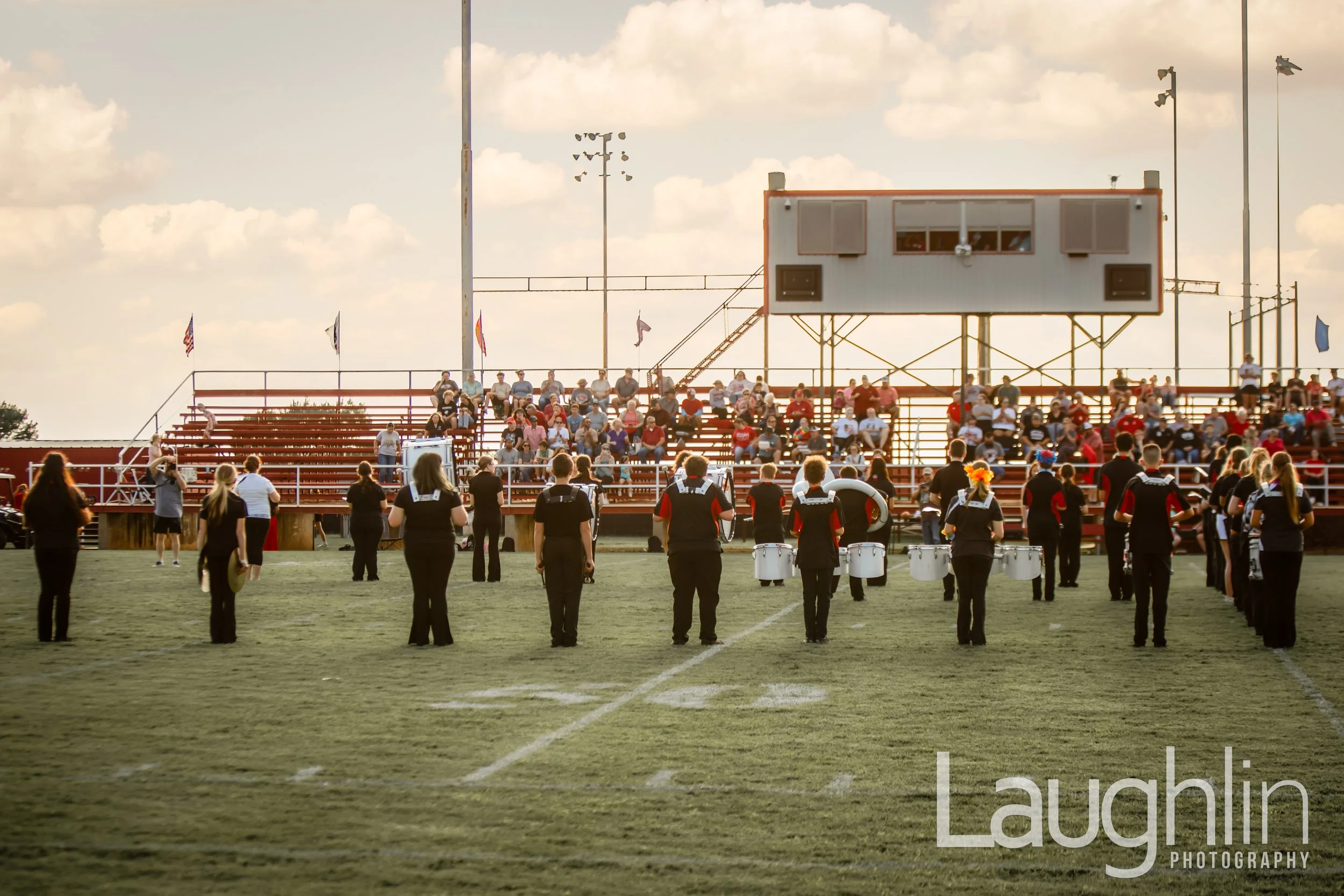How to Get Great Football Photos (and Not Just 73 Blurry Shots of a Pileup)
A Canon R6mk2 paired with an old-school Canon-adapted EF 70-200 F2.8 IS is enough reach if you are strategic — Camp out in the end-zone, and always stay ahead of the offense on the field.
Football season is here — which means it’s time for muddy cleats, late-night nacho dinners, and parents everywhere trying to capture their kid’s game-winning catch from the nosebleeds with a phone camera set to "panicked zoom."
Listen, I get it. You want photos. Good ones. The kind that actually show your kid doing what they love. But football’s a fast game. It’s chaotic. And stadium lighting isn’t exactly flattering.
The R6MK2 and the OG — the Canon 70-200 IS 2.8 v1 — with a bit of antiquation and post-work help create magical moments!
So here’s the game plan: real-deal tips from someone who’s spent enough time on the sidelines to know the difference between a screen pass and a busted play.
1. The Stands Are the Worst Seat in the House (For Photos)
Anticipate where the play will “probably” go. Having watched four or five games with this QB, I knew he was a shifty speedster who liked to break the pocket to his right. In an obvious passing situation (3rd and long), I positioned myself where I “thought” he would go — And he did.
If you're in the bleachers trying to get action shots, you're basically playing Where’s Waldo with a telephoto wish and a prayer. Distance, obstacles, bad angles — it’s a recipe for frustration.
The best football shots come from the sideline or end zone and include the eyes of the subject. That’s where you can see expressions, intensity, and action without a sea of helmets in the way. (Bonus: you won’t have to crop out the dad next to you who brought an umbrella the size of a trampoline.) A lot of photographers use monopods — I don’t — But that doesn’t mean I won’t in the future.
A shooting the action from a lower perspective — squatting — gives the photos a bit extra perspective pop — Sorry about your knees!
2. Gear Matters. Sorry, It Just Does.
Yes, phones are amazing — especially for selfies and dramatic sunset shots from your porch. But football is not a still-life subject. You need a real camera with fast autofocus and a decent zoom range (think 70-200mm at minimum) if you want clear, sharp action. The lower the aperture the better — The first week or two of the season an F4 may work — But after the sunsets before kickoff, anything less than an F2.8 just won’t cut it.
Also, low-light performance matters. Friday night lights might look dramatic, but your camera sensor sees them as “dim chaos.” Adobe Lightroom has a GREAT Denise function that can clean the grainiest messes produced by high ISO.
3. Anticipate the Play — Don’t Just Chase It
This might be the biggest difference between “meh” shots and jaw-droppers: timing.
If it’s 3rd and long, don’t focus on the line of scrimmage — look downfield. If the QB’s got happy feet, be ready for a scramble. Anticipate the handoff. Follow the eyes of the player, not just the ball.
If you’re just reacting to the action, you’re already behind. The best shots are made a second before the play unfolds.
4. Reactions Are Just As Important As Action
That end-zone catch is great — but don’t sleep on the celebration. The teammates chest-bumping. The coach accidentally doing a high kick like he’s back in ‘92.
Candid sideline reactions are gold. They tell the story beyond the scoreboard. Watch the bench, the coaches, even the crowd — especially after a big play.
5. Burst Mode Is Your Friend — But Use It Wisely
If your camera has a burst mode, use it. Football happens fast. You don’t want to miss the peak action because your shutter finger blinked.
But don’t just spray and pray. Burst when it matters — right before the tackle, the throw, the leap. Otherwise, you’ll end up with 437 photos of pre-snap huddles and someone adjusting their chinstrap.
6. Don’t Forget the Quiet Moments
Not every photo has to be a Sports Illustrated cover. Some of the most meaningful shots come during the in-between moments — a kid catching their breath on the sideline, a coach offering encouragement, teammates huddled together before the final drive. What goes on around the field matters, too. The band, cheerleaders, coaches, and fans — It all matters and helps tell the story. Of course the game is important — But there’s only 22 kids on the field — There are so many opportunities outside of the painted grass to tell compelling stories — Don’t forget about ‘em!
Football is full of grit and drama, but also heart and humanity. Don’t miss it.
7. File This Under Obvious, But Important: Know the Game
You don’t have to be a play-calling mastermind, but basic football knowledge helps a lot. If you know what a draw play looks like or how a team lines up for a blitz, you’ll be able to position yourself better and capture moments before they even unfold.
Bonus Tip: Clean Your Lens. Please.
This one’s for my phone photographers in the stands. If your “amazing touchdown shot” looks like it was taken through a fogged-up potato chip bag… wipe your lens. That’s probably leftover pizza grease from halftime. You know who you are.
In the End...
Great football photography isn’t luck. It’s timing, anticipation, gear, and a little grit. And yes — it’s fun. You get to be part of the energy, the intensity, and the story.
So whether you're a parent with a DSLR, a student with a camera pass, or just someone who wants to understand how those epic game-day shots are made — take this as your playbook.
Friday night lights don’t last forever. But the memories? If you shoot 'em right, they do.


























